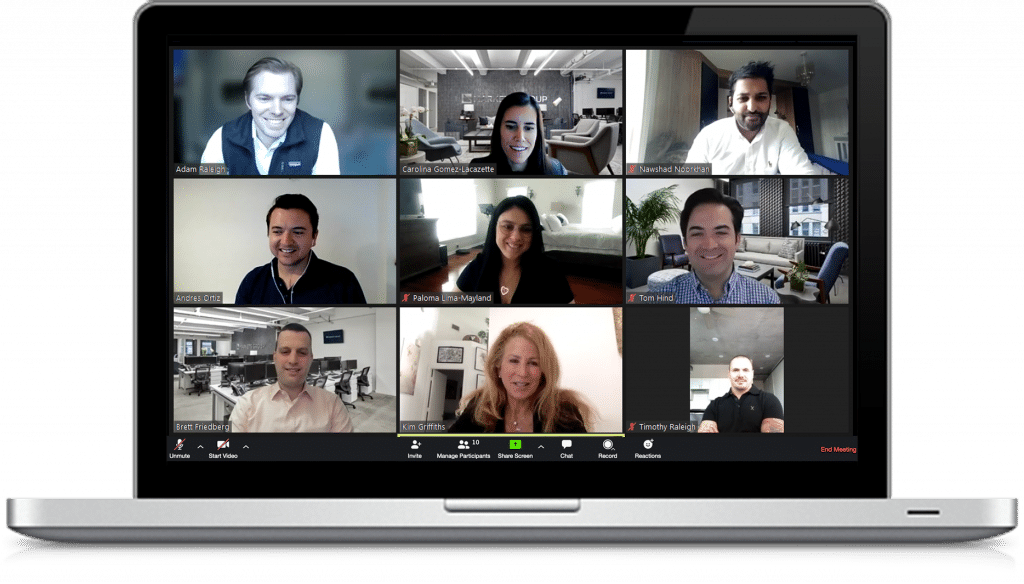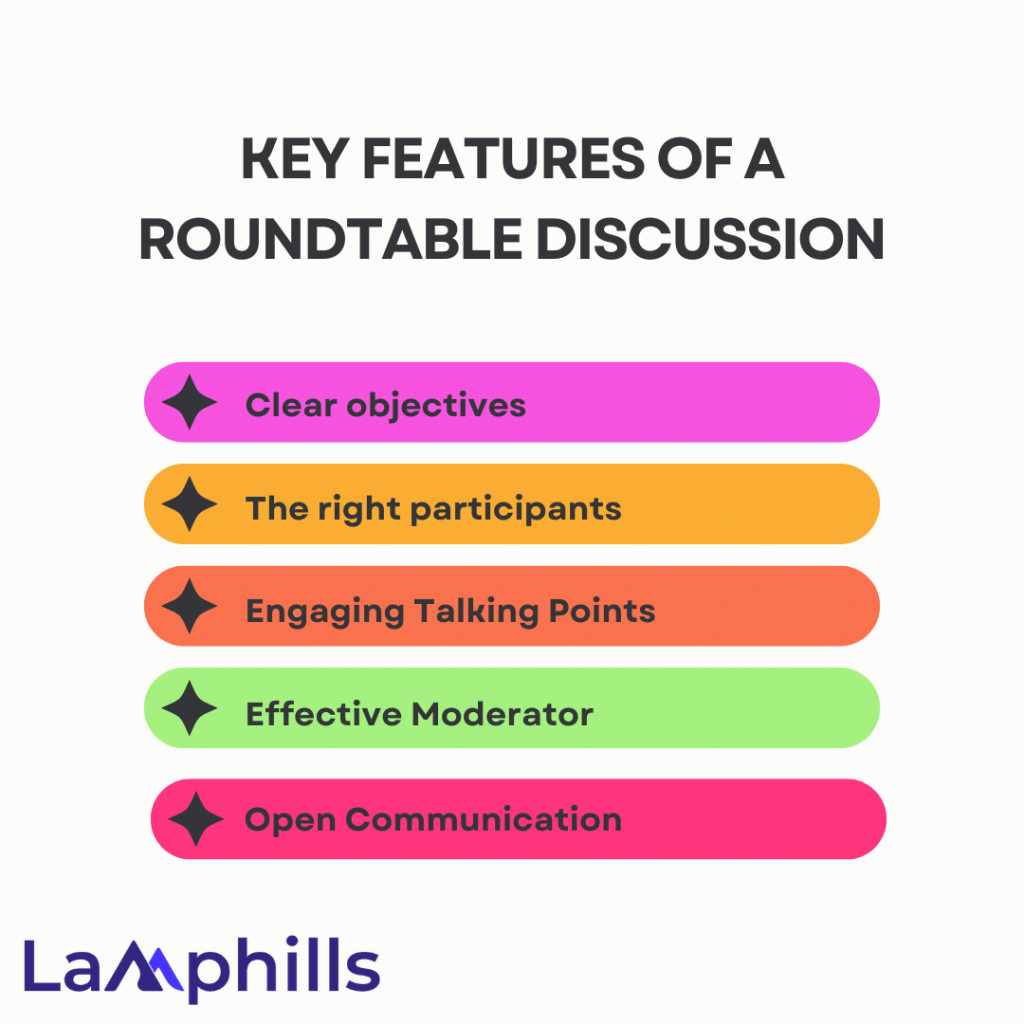When I first started facilitating round table discussions, I felt both excited and nervous. The concept of bringing together professionals and thought leaders to exchange ideas was exciting, but ensuring that the conversation ran well was intimidating. Over the years, I’ve discovered that a well-facilitated roundtable discussion can be extremely beneficial and fruitful. Here, I’ll give my thoughts on how to lead an interesting round table debate, based on personal experience and best practices.
What is a Roundtable Discussion?
A roundtable discussion is a structured discourse that includes one moderator, several chosen speakers who contribute a diversity of perspectives to a topic, and an audience that can either observe or participate by asking questions. The roundtable discussion style is sometimes used as a break-out exercise for small groups during a conference or presentation.
Understanding the Importance of Roundtable Discussions
Round table discussions are an effective technique to promote open dialogue, share varied viewpoints, and produce new ideas. Unlike typical meetings, these discussions foster equitable involvement, making them excellent for collaborative decision-making and issue resolution.
According to a Harvard Business Review study, organizations that encourage open and inclusive discussions are 1.7 times more likely to be innovative leaders.
Key Takeaways
- A good round table discussion requires thorough preparation.
- Encouraging equitable participation yields more diversified insights.
- Effective facilitation necessitates active listening and adjustment.
Types of Roundtable Discussions
Roundtable discussions exist in a variety of formats, each adapted to certain goals, sectors, and participant dynamics.
#1. Business Roundtable

A business or professional roundtable takes place in a professional setting, typically during conferences, seminars, or workshops. Experts, opinion leaders, or businesspeople in a specific field drive the discussion.
Participants engage in detailed discussions regarding industry trends, issues, and innovations. Professional roundtables encourage networking, knowledge sharing, and the development of new ideas.
#2. Policy Roundtable
A policy roundtable is an organized platform where experts, stakeholders, policymakers, and others with vested interests can have in-depth discussions about specific policy topics.
#3. Academic Roundtable
An academic roundtable is held among individuals in the educational field. An academic debate stimulates intellectual discovery, cross-disciplinary dialogue, and the dissemination of cutting-edge research.
Academic roundtables offer a unique opportunity to focus on the complexities of subjects, discover new viewpoints, and generate novel ideas.
#4. Community Roundtable
A Community Round Table is held to invite residents to discuss urgent community concerns. Topics covered include local environmental sustainability, community safety, health and wellness initiatives, fundraising campaigns, and more.
#5. Virtual Roundtable Discussions

A virtual roundtable discussion is a practical technique to arrange a debate that reaches a larger number of individuals while requiring no physical space. However, keeping people engaged is a difficulty when facilitating a virtual roundtable conversation. Audience members today have short attention spans, and event planners must fight with numerous distractions online.
Furthermore, engaging with others via a screen does not come naturally to participants. This is why a moderator should make a concerted effort to be vulnerable, relatable, and engaging with attendees.
#6. Healthcare Roundtable
Health is a topic fraught with questions. Hospitals or health professionals can host public round table discussions on a particular health topic. Audience members are welcome to attend and offer questions, comparable to a health consultation during checkups.
#7. Problem-Solving Roundtable Discussion
A problem-solving roundtable discussion applies to any industry. Event planners may facilitate this type of debate for a variety of organizations. A moderator will simply provide a scenario or difficulty, allowing participants to explore and collaborate on alternative solutions.
Key Features of a Roundtable Discussion

If you’re ready to begin arranging your roundtable discussion, here are the elements to consider.
#1. Clear objectives
To host a successful roundtable discussion, event planners must have a clear goal and direction. The moderator can use the objective to lead the group conversation. Well-defined objectives help the audience understand why they are participating.
When the audience understands what is expected of them, they may contribute more effectively by giving relevant ideas, experiences, and expertise about the objectives.
#2. The right participants
The success of your roundtable discussion depends on having the proper people. Ideally, participants should be active listeners who are knowledgeable about the issue under discussion.
Participants who are well-prepared and educated about the topic improve the overall quality of the debate. They can hold meaningful discussions, ask insightful questions, and present well-reasoned arguments.
#3. Engaging Talking Points
Audience engagement is a good measure of a successful roundtable. When talking points are thought-provoking and relevant, participants are more likely to contribute their perspectives, ideas, and experiences. Engaging topics instill a sense of significance and ownership in the audience, encouraging individuals to speak up.
#4. Effective Moderator
A moderator determines the tone of the roundtable conversation. Different speakers’ personalities and communication styles can influence group dynamics. A skillful moderator navigates these dynamics, keeping the discussion constructive and respectful.
#5. Open Communication
Moderators and organizers might establish ground rules to foster interaction among guests. To have a productive debate, each person must be willing to communicate openly with one another and listen to opposing viewpoints.
To increase participant comfort, moderators can create a nondisclosure agreement that ensures all conversation points are kept confidential within the round table.
Read Also: Event Branding Examples: Ideas to Inspire Your Next Big Event
Roundtable Format Options
When presenting a roundtable as part of a bigger event, you can normally follow one of two approaches:
#1. Roundtable with the audience
With this option, you may invite a group of guest speakers to participate in a roundtable discussion in front of an audience of event attendees. You can also include limited audience engagement by asking attendees to submit questions.
#2. Roundtable Breakout Sessions
When the goal is to have all event participants participate in the roundtable, the typical approach is to divide the attendee group into smaller subgroups. Each group then conducts its own roundtable discussion, preferably in a separate breakout area. If preferred, each group might designate a spokesperson to present their findings to the others during the post-roundtable discussion phase.
Steps For Facilitating an Engaging Round Table Discussion
Step #1. Define the purpose and goals
Begin by stating clearly the aim and goals of the discussion. What do you want to achieve? Whether you’re brainstorming solutions to an issue, sharing industry insights, or making strategic decisions, having a defined aim will help lead and focus the conversation.
Step #2. Choose the right participants
Selecting the appropriate people is critical for a meaningful debate. Aim for a varied group with different knowledge and viewpoints on the topic. This variety will enrich the discussion and create a well-rounded understanding of the subject.
For example, when I hosted a debate about digital marketing techniques, I included people from several industries, resulting in a richer and more comprehensive conversation.
Step #3. Prepare an agenda
An agenda provides a road map for the debate and guarantees that all-important themes are addressed. Share the agenda with attendees ahead of time so they can bring their thoughts and suggestions.
Set time limits for each topic to keep the discussion on track. I once facilitated a round table on customer experience, and having a specific agenda helped to keep the debate focused and flowing.
Step #4. Set the ground rules
Establishing ground rules promotes a polite and productive environment. Encourage participants to actively listen, minimize interrupting, and respect opposing viewpoints. It is also beneficial to assign a timekeeper to ensure that each topic is given appropriate attention.
Setting these ground rules ahead of time resulted in a more inclusive and courteous conversation during a recent workplace diversity round table.
Step #5. Promote Open Communication
As a facilitator, your responsibility is to promote open discussion and guarantee that all views are heard. Use open-ended questions to spark conversation and encourage quieter members to voice their ideas.
For example, asking, “Can you share an example of how this has worked in your organization?” can elicit meaningful responses from all parties.
Step #6. Use facilitation techniques
Effective facilitation entails employing a variety of tactics to keep the discussion engaged and effective. Brainstorming, mind mapping, and round-robin techniques can all help you produce ideas and keep the momentum going.
During an innovation round table, I used mind mapping to represent ideas, allowing participants to build on one another’s contributions and see connections more clearly.
Step #7. Capture Key Points
Assign someone to take notes or record the conversation to capture important points and insights. This documentation is useful for reference and follow-up actions. When I facilitated a round table on digital transformation, having a scribe ensured that all essential thoughts were captured and shared with participants for future action.
Step #8. Summarize and follow up
After the discussion, outline the important points and future steps. Follow up with attendees by providing a summary and any action items. This reinforces the results of the debate and ensures accountability. Following a recent round table on sustainable business practices, the follow-up report assisted participants in putting the ideas discussed into action and tracking their progress.
Leveraging Templates for Effective Facilitation
Using a round table discussion template might help to streamline the planning and facilitation process. A template allows you to organize the agenda, track crucial topics, and ensure that all relevant pieces are included. For example, our customizable Round Table Discussion Template can help you structure your discussions efficiently, resulting in more productive conclusions.
What Is the Difference Between a Panel and a Roundtable Discussion?
Roundtables are less formal than panel discussions. Roundtable discussions can be held at a round table, allowing speakers and attendees to sit face-to-face. Panel discussions typically feature guest speakers on a stage or platform, with all guests looking in front. While this type of seating conveys information to the audience, round table seating appears more personal and friendly.
Why Do Round Tables Work Better For Meetings?
As previously stated, roundtable discussions bring the audience and presenters closer together. Sitting together and staring at one another fosters a sense of connection. Round table discussions allow presenters to pass on information to audience members in a relaxed setting.
What are the Benefits of Holding a Meeting at a Round Table Rather than a Rectangular One?
When it comes to roundtable discussions, physically employing a round table will help to foster a sense of community and togetherness. Like most meetings and panels, the guest speakers are on stage, with all of the chairs facing forward. This may result in audience members becoming lost in the shuffle throughout the meeting.
There is no “head of the table” when using a round table, so everyone feels like they are participating in the debate. When learning about new things, everyone should feel welcome and comfortable. Your guests should look at each other and their guest speakers as if they were speaking with an old friend.
What are the Advantages of Hosting a Roundtable Discussion for B2B Technology Companies?
Round table topics provide an opportunity for in-depth discussions about industry-specific topics. They enable peers and professionals to share ideas, best practices, and creative solutions, establishing your organization as a thought leader in the technology area.
How Do I Choose a Topic for a Roundtable Discussion?
The topic should highlight current industry trends, difficulties, or breakthroughs that are relevant to your target audience. A tight, focused topic typically prompts more in-depth discussion.
Conduct market research or consult with your consumer personas to uncover issues that are important to your audience.
How Many People Should I Invite to a B2B Technology Roundtable Discussion?
A roundtable discussion should typically have 6-12 participants to provide meaningful interaction while providing everyone an opportunity to speak. The number varies depending on the difficulty of the topic and the length of the debate.
Who Should Moderate the Roundtable Discussion?
Select a moderator with subject area expertise and good facilitation abilities. This person should be able to effectively lead the discussion, engage all participants, and keep the conversation on course.
Which Format Works Best for B2B Tech Roundtable Discussions: In-person or Virtual?
Both formats provide advantages. In-person events provide richer engagement, but attendance may be limited owing to location constraints. Virtual roundtables are more accessible and convenient, but they may lack the nuances of in-person discussion.
How Do I Encourage Active Participation from All Attendees?
Pre-event communication, such as setting the agenda and sharing conversation points, can assist attendees prepare. During the event, the moderator should invite quieter participants to voice their thoughts and balance the conversation among all attendees.
Should I Record the Roundtable Discussion?
Recording the debate might be useful for developing content like summaries, blog entries, and even podcasts. However, you should always notify participants in advance and obtain their consent.
How Can I Ensure the Confidentiality of Sensitive Information Shared?
You can utilize Non-Disclosure Agreements (NDAs) to explicitly state the confidentiality requirements before beginning the discussion. Choose a secure platform for virtual roundtables to protect data privacy.
How Can I Promote My B2B Technology Roundtable Discussion?
Use social media, email marketing, and industry relationships to attract the proper guests. Promoting it through participants’ networks can also help reach a more specific audience.
How Can I Determine the Success of a Roundtable Discussion?
Post-event surveys for feedback, monitoring of attendee involvement, and tracking any commercial prospects or collaborations that emerge from the debate can all be useful performance metrics.
How Lamphills Media Can Help
Lamphills Media specializes in arranging and facilitating significant roundtable discussions. Our team of professionals can help you choose the proper participants, plan the agenda, and ensure that the discussion runs successfully. Whether you want to brainstorm new ideas, tackle complex challenges, or make strategic decisions, we have personalized solutions to help you achieve your objectives.
Conclusion
An engaging round table discussion involves thorough planning, active facilitation, and excellent follow-up. By using these best practices, you may foster a collaborative environment in which varied viewpoints are shared and innovative solutions are developed. Are you ready to take your round table discussions to the next level and create more impact?
Related Articles
- 21 Event Press Release Templates & Examples That Inspires Me
- Media Relations: Everything You Should Know (Updated)
- How to Write a PR Report: Structure,& Expert Tips
- How Bad Communication Costs Your Business & How to Fix It in 7 Steps






